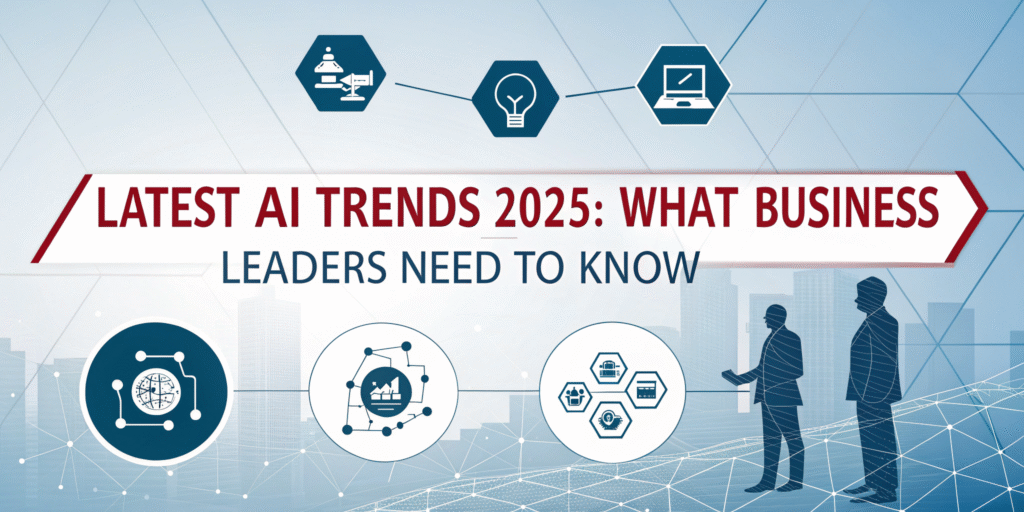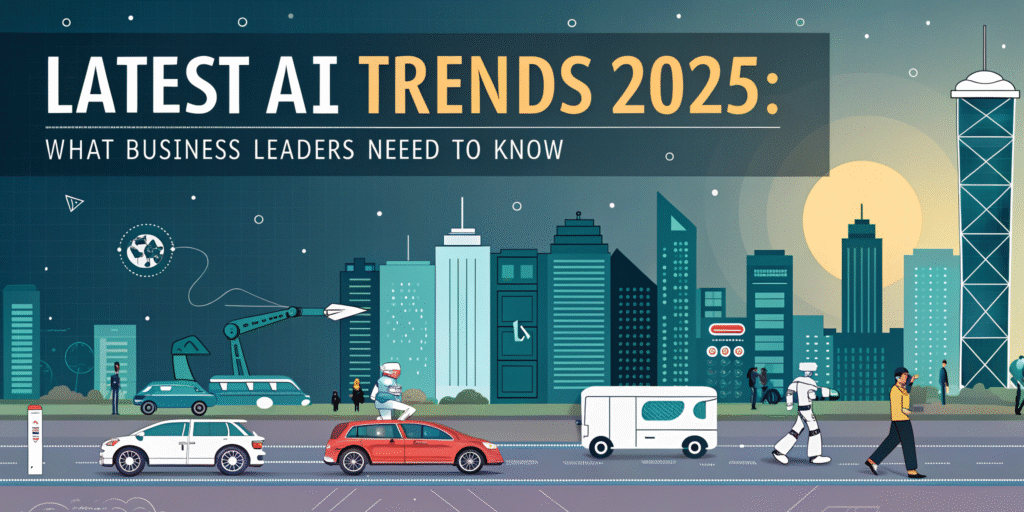
Introduction
The pace of artificial intelligence innovation is not just accelerating; it’s transforming how we work, create, and compete. For entrepreneurs and marketers, staying ahead means understanding not just what AI is, but where it’s headed next. As we move through 2025, a new wave of sophistication is emerging, pushing beyond basic chatbots and image generators. This article will unpack the most impactful latest AI trends 2025 has to offer, providing a clear-eyed view of the technologies that are set to redefine the business landscape. From AI that can take action to systems that understand the world more like humans do, we’ll explore what’s new, what’s next, and how you can prepare.
Table of Contents
- From Hype to Habit: The Evolution of AI Trends
- Who Needs to Track These Trends? Audience & Demographics
- Key Features & Functions of 2025’s AI Landscape
- Business & Marketing Potential
- Best Practices & Tips for Adoption
- Challenges & Limitations
- The Future Outlook: Beyond 2025
- Conclusion
From Hype to Habit: The Evolution of AI Trends
To appreciate the latest AI trends 2025 is presenting, it’s helpful to see how we got here. The past few years were dominated by the explosive arrival of generative AI, captivating the world with its ability to create text and images. Initially, the focus was on novelty and experimentation. However, the trend in 2025 is a decisive shift from proving capability to delivering tangible, integrated value.
The evolution is marked by a key transition:
- 2022-2024: The Generative AI Breakthrough. The launch of powerful large language models (LLMs) like GPT-4 made AI a mainstream conversation. The trend was access and discovery.
- 2025: The Integration and Action Phase. The novelty has worn off. The current trend is about weaving these powerful tools seamlessly into existing workflows and empowering them to not just suggest, but to do. The focus is on reliability, cost-effectiveness, and achieving specific business outcomes.
Who Needs to Track These Trends? Audience & Demographics
The implications of the latest AI trends 2025 are far-reaching, but they are particularly critical for:
- CEOs and Strategic Planners: To guide long-term investment and avoid strategic obsolescence.
- Chief Technology Officers (CTOs) & Product Managers: To make informed decisions about tech stacks, product roadmaps, and feature development.
- Digital Marketers and Content Strategists: To leverage new AI capabilities for hyper-personalization, content creation at scale, and innovative customer engagement.
- Startup Founders: To identify new market opportunities and build agile, AI-native businesses from the ground up.
- Any professional tasked with driving efficiency, innovation, or growth will find a competitive edge by understanding these directions.
Key Features & Functions of 2025’s AI Landscape
The latest AI trends 2025 are characterized by a move towards more autonomous, efficient, and holistic systems. Here’s a breakdown of the key advancements shaping this year.
The Rise of Agentic AI
This is arguably the most significant shift. Instead of AI tools that simply respond to prompts, Agentic AI involves systems that can execute multi-step tasks autonomously. Think of an AI “agent” that you can instruct to “plan a marketing campaign for Q4,” and it proactively conducts market research, drafts copy, designs visuals, and schedules social media posts—all without needing your input at every stage.
- How it works: These agents use LLMs for planning and reasoning, coupled with tools that allow them to take actions in software environments (like a CRM or a design tool).
Multimodal AI Becomes the Standard
While early AI models specialized in one type of data (text or images), the latest AI trends 2025 point to multimodal as the new baseline. These models can simultaneously understand and generate across text, images, audio, and even video.
- Practical Example: You could show a multimodal AI a video of a malfunctioning machine on your factory floor and ask, “What’s wrong and how do we fix it?” The AI would analyze the visual and audio data, cross-reference it with technical manuals, and provide a diagnosis and repair steps.
Small Language Models (SLMs) and Open-Source Proliferation
The era of only massive, billion-parameter models is evolving. There’s a growing trend towards smaller, more efficient models that are cheaper to run and can be customized for specific tasks. This open-source revolution makes powerful AI accessible to companies without gargantuan budgets, enabling specialized applications in medicine, law, and finance.
- Benefit: SLMs can run on-premise or on smaller devices, addressing data privacy concerns and reducing operational costs.
AI-Powered Process Automation
Moving beyond Robotic Process Automation (RPA), AI is now automating complex, cognitive tasks. This includes everything from reviewing legal contracts and generating financial reports to writing and testing code. This trend is about augmenting knowledge work, not just clerical work.
Business & Marketing Potential
Understanding these latest AI trends 2025 unlocks unprecedented opportunities:
- Hyper-Automated Workflows: Deploy AI agents to handle entire business processes, from customer onboarding to supply chain management, drastically reducing manual effort and human error.
- Next-Generation Personalization: Use multimodal AI to create immersive, personalized customer experiences. For example, an AI could generate a custom video message for a high-value client, incorporating their name and recent interactions with your brand.
- Rapid Prototyping and Innovation: SLMs allow businesses to quickly build and test AI-powered features for their products or services without a massive initial investment, accelerating time-to-market.
- Content at Scale with Strategic Depth: AI agents can manage content calendars, research topics, draft posts, and analyze performance, freeing marketers to focus on high-level strategy and creative direction.
Best Practices & Tips for Adoption
To successfully leverage the latest AI trends 2025, a strategic approach is essential.
- Focus on Augmentation, Not Replacement: Design AI workflows that augment human intelligence. Use AI for data crunching and initial drafts, allowing your team to focus on strategy, creativity, and final decision-making.
- Start with a Pilot, Then Scale: Identify a single, high-impact process (e.g., lead qualification) for an AI agent pilot. Measure its success rigorously before rolling it out more broadly.
- Prioritize Data Governance: The power of AI is directly tied to the quality of its data. Ensure you have clean, well-organized data and robust policies for its use and privacy.
- Upskill Your Team: Invest in training to help your workforce collaborate effectively with AI tools. Foster a culture of experimentation and learning.
- Choose Flexibility: Opt for modular and open-source AI solutions where possible. This prevents vendor lock-in and allows you to adapt quickly as the technology evolves.
Challenges & Limitations
Despite the excitement, prudent leaders must acknowledge the hurdles:
- The Trust and Explainability Gap: As AI systems become more autonomous, ensuring their decisions are transparent and trustworthy is a major challenge. “Black box” algorithms can be difficult to audit.
- Increased Security Risks: Agentic AI systems with access to multiple software tools create new attack surfaces for cyber threats. Robust security protocols are non-negotiable.
- Potential for Amplified Bias: If not carefully managed, AI agents can automate and scale existing biases present in their training data, leading to unfair outcomes.
- Integration Complexity: Seamlessly integrating powerful AI agents into legacy IT systems and established workflows can be technically complex and resource-intensive.
The Future Outlook: Beyond 2025
The trends of 2025 point toward an even more integrated future. We are moving towards an era of Ambient AI, where intelligence is seamlessly woven into the background of our digital experiences, anticipating needs and acting proactively. The boundary between human and machine collaboration will continue to blur, with AI becoming a fundamental, invisible partner in problem-solving.

Conclusion
The latest AI trends 2025 mark a pivotal moment: AI is graduating from a promising tool to a core operational component. The shift towards agentic, multimodal, and efficient AI is not just technical; it’s strategic. For business leaders, the message is clear. The time for passive experimentation is over. The imperative now is to actively integrate these intelligent systems into your strategy to unlock new levels of efficiency, creativity, and customer connection. By understanding these trends and adopting a thoughtful, human-centric approach, you can confidently navigate the exciting transformation ahead. Start by identifying one high-impact area in your business where AI can make a difference today.